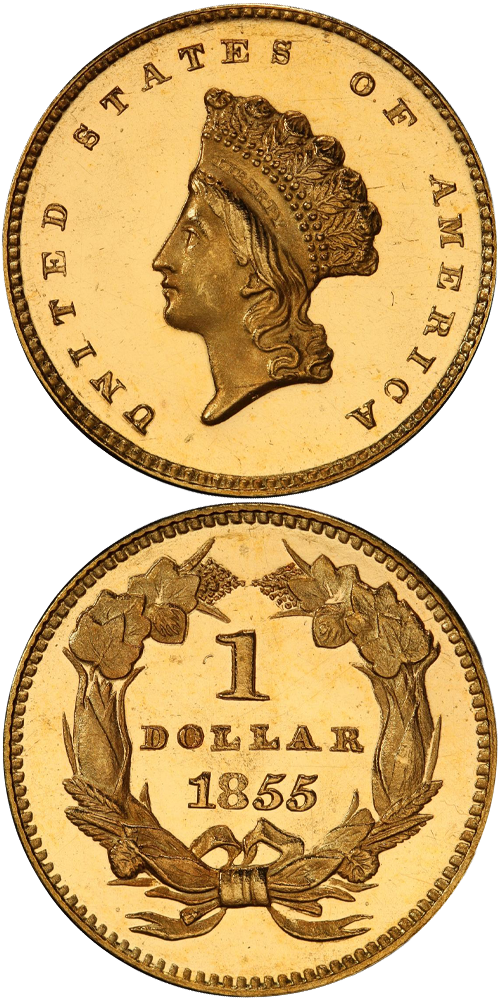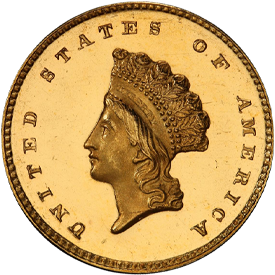Designed by: James Barton Longacre
Issue Dates: 1854-1855
Composition: 90% gold, 10% copper
Diameter: 15 mm
Weight: 1.67 grams (25.77 grains)
Edge: Reeded
Proof Mintage: Fewer than 50
In 1854 James B. Longacre restyled the gold dollar to an increased diameter. The obverse motif was changed to the head of an Indian princess, wearing a feather headdress and a band inscribed LIBER TY, facing left, with UNITED STATES OF AMERICA surrounding. The reverse shows a wreath of com, cotton, wheat, and tobacco, similar to that used on the $3 of the same year (and the Flying Eagle cent minted later, beginning in 1856). From the very outset difficulties in striking ensued. The high relief of the head of Miss Liberty on the obverse caused the situation in which metal flowing into the deep die recess for the obverse prevented the relief areas on the corresponding part of the reverse, particularly the central two digits of the date, from striking up properly. Also there were problems with the striking up of the wreath and certain parts of Miss Liberty's head. After a coinage in 1854 at the Philadelphia Mint, a coinage in 1855 at the Philadelphia, Charlotte, Dahlonega, and New Orleans mints, and a coinage in 1856 at the San Francisco Mint only, the obverse motif was modified. In the 1854-1856 span there are several scarce issues and two rarities, the 1855-C and 1855-D.
The type collector will have no difficulty in encountering a Philadelphia Mint coin of 1854 or 1855 in any desired grade from Very Fine through AU. Uncirculated pieces are scarce, and superb Uncirculated coins are seldom met with. Nearly all pieces are lightly struck at the center of the date on the reverse, so this is to be expected. Indeed, this is the reason the design was changed in 1856. The 1854-1856 dollar, usually called the Type II, is the scarcest of the gold dollar designs and is the key to a gold dollar type set.







